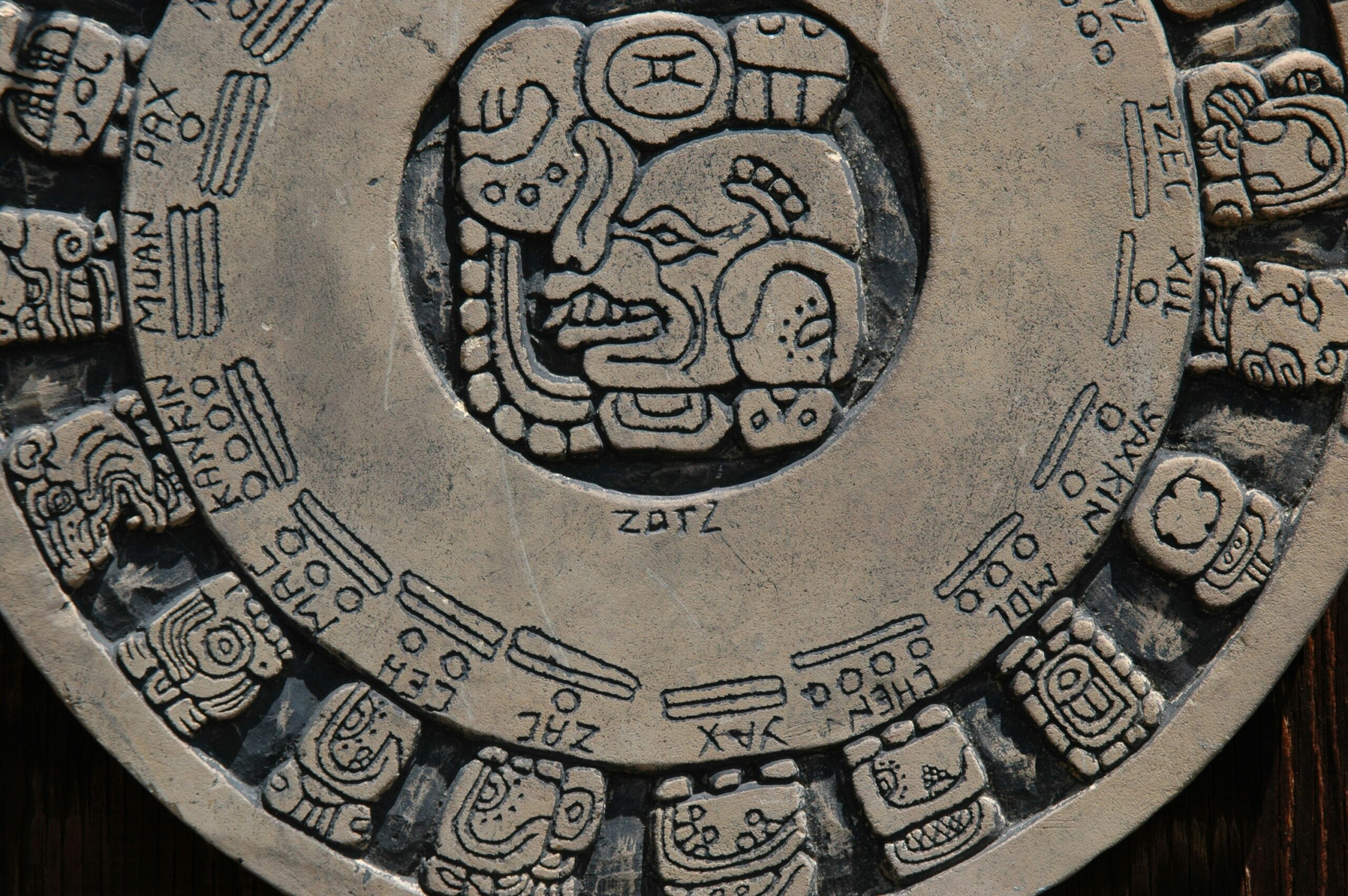Introduction to the Mayan Civilization
The Mayan civilization, one of the most remarkable societies in pre-Columbian America, thrived in regions comprising present-day southeastern Mexico, Belize, Guatemala, and parts of Honduras and El Salvador. This complex civilization is renowned for its profound understanding of mathematics, astronomy, and significant cultural contributions that continue to influence modern perceptions of ancient societies. The historical significance of the Mayans is evident through their intricate city-states, impressive architectural achievements, and a social structure that fostered advancements in various domains.
One of the hallmarks of the Mayan civilization is its sophisticated calendar system, which reflects their advanced knowledge of timekeeping and celestial cycles. The Mayans developed a series of calendrical systems, most notably the Tzolk’in and the Haab’, which they used to organize their agricultural activities, religious ceremonies, and social events. This deep comprehension of time not only guided daily life but also was integral to their spiritual beliefs, showcasing their connection to the cosmos.
The Mayan fascination with the heavens led to a plethora of astronomical discoveries that were, at the time, unparalleled. They accurately predicted solar and lunar eclipses and understood celestial events in ways that many civilizations did not. Their insights into the movements of planets and stars formed the foundation of their intricate calendrical systems, allowing them to track time with precision and to interpret its significance in both daily living and religious contexts.
Understanding the Mayan calendar is pivotal for deciphering the civilization’s signs and symbols, which encapsulate their worldview. This knowledge not only enhances our appreciation of their cultural richness but also provides valuable lessons on the importance of time in shaping societal structures. As we delve deeper into the intricacies of the Mayan sign calculator, it becomes increasingly apparent that the Mayans’ advanced grasp of time and astronomy is essential for a holistic understanding of their civilization.
The Mayan Calendar Systems
The Mayan civilization is renowned not only for its monumental architecture and intricate artwork but also for its sophisticated calendar systems. Among these, the Tzolk’in and Haab’ calendars are particularly notable. The Tzolk’in is a 260-day calendar composed of 20 periods of 13 days. This calendar played a crucial role in agricultural practices, religious ceremonies, and the scheduling of events, intertwining sacred time with daily life. Each day within the Tzolk’in carries unique significance, influencing various aspects of Mayan culture, such as rituals and the timing of crop planting and harvesting.
On the other hand, the Haab’ calendar consists of 360 days divided into 18 months of 20 days each, plus an additional month of 5 days called ‘Wayeb’. This system was quintessential for agricultural activities, allowing the Mayans to monitor seasonal changes and plan for harvest cycles effectively. The Haab’ calendar was essential for public ceremonies and festivals, aligning the community’s social and spiritual calendar with agricultural cycles, which were vital for survival.
The integration of these two systems created a larger calendar cycle known as the Calendar Round, which spans 52 years. During this period, the Tzolk’in and Haab’ calendars would complete their cycles and realign, signifying a significant astronomical event that the Mayans saw as important for renewing their connection to the gods and the universe. This complex interplay of calendars underpinned the cultural and socioeconomic fabric of Mayan society.
In everyday life, the significance of the calendar systems extended far beyond mere tracking of days; they were essential for the organization of both daily activities and long-term planning. Consequently, the calendars shaped the rhythms of Mayan society, embedding their practices, beliefs, and agricultural cycles into every aspect of their existence, illustrating just how pivotal the Mayan calendar systems were to their civilization.
Understanding the Mayan Zodiac
The Mayan zodiac presents a distinctly different approach to astrology compared to Western systems, offering a rich tapestry of symbols and meanings deeply rooted in the ancient Mayan civilization. At the core of this system is the Tzolk’in calendar, which comprises a series of 20 day signs. Each sign embodies unique characteristics that influence an individual’s personality traits and life path. Unlike Western astrology, which traditionally uses the twelve signs of the zodiac linked to the solar year, the Mayan zodiac is interwoven with the cycles of nature, reflecting the spiritual and cosmic beliefs of the Maya.
The twenty day signs of the Tzolk’in are integral to understanding the Mayan astrological framework. These signs include prominent figures such as K’an (the Seed), which symbolizes abundance and growth, and Ten’ (the Serpent), representing transformation and healing. Each sign invites a deeper exploration of personal attributes, strengths, and challenges. For instance, those born under the sign of K’an may be seen as resourceful visionaries, while individuals associated with the sign of Ten’ could be regarded as potent healers or wise leaders.
The importance of the Mayan zodiac goes beyond mere personality assessment; it serves as a guide for understanding one’s life journey. The Mayans believed that each person resonates energetically with their day sign, providing insights into their destiny and the lessons they are meant to learn throughout their lives. This intricate system encapsulates a worldview where every individual plays a unique role in the broader tapestry of existence. Consequently, engaging with the Mayan zodiac allows contemporary enthusiasts to connect with ancestral wisdom, fostering appreciation for the diverse perspectives on human experience.
What is a Mayan Sign Calculator?
A Mayan sign calculator is a specialized tool designed to determine an individual’s Mayan sign based on their date of birth. This calculator draws upon the ancient Mayan calendar system, which features a complex structure of cycles and periods believed to reflect various aspects of personality, destiny, and connection to the universe. By inputting one’s birth date, individuals can uncover their corresponding Mayan sign, which plays a crucial role in understanding their astrological profile within this ancient framework.
The mechanics of the Mayan sign calculator involve an intricate process that takes into account several key components of the Mayan calendar, including the Tzolk’in, a 260-day sacred calendar, and the Haab’, a 365-day solar calendar. Each day in the Tzolk’in is associated with a specific sign, which is assigned a particular meaning and set of attributes. This calendar system was meticulously crafted by the Maya, showcasing their deep understanding of time and cycles, as well as their reverence for celestial bodies.
In addition to providing insights into personal characteristics, the Mayan sign calculator also serves as a bridge between individuals and the wisdom of Mayan astrology. Many people find that discovering their Mayan sign can enhance their understanding of themselves and their life experiences, aligning them with the broader cosmic principles outlined by this rich astrological tradition. The significance of one’s Mayan sign can also extend beyond personal reflection; some practitioners believe that it may offer guidance in decision-making and life pathways. Consequently, engaging with the Mayan sign calculator can be a valuable experience for those interested in exploring the depths of their potential through the lens of Mayan astrology.
How to Use a Mayan Sign Calculator
Using a Mayan sign calculator can be an enlightening and straightforward process. To begin, it is essential to gather some basic information, with the most crucial piece being your birth date. The Mayan calendar operates on a unique system that combines different cycles, so accurate details about your date of birth are vital for an accurate calculation.
Once you have your birth date ready, follow these steps to calculate your Mayan sign:
1. **Access a Mayan sign calculator**: Several websites and online resources offer Mayan sign calculators. A simple internet search will lead you to options where you can input your information securely.
2. **Input your birth date**: Look for the section designated for entering your birth date. Typically, you will need to input the day, month, and year. Ensure the date is formatted correctly to avoid any errors during the calculation.
3. **Select any additional options**: Some Mayan sign calculators provide options to choose particular types of readings, such as those based on the tzolk’in or the haab’ calendar. If you have a preference or specific interest, select the appropriate option. Otherwise, proceeding with the default settings is generally advisable.
4. **Click the calculate button**: After entering the required information, simply click the “Calculate” or “Submit” button. The calculator will then process your input and provide you with your Mayan sign, along with any additional insights or interpretations related to your sign.
5. **Interpret your results**: Most calculators will not only provide you with your sign but will also offer details regarding its significance and characteristics. It may be helpful to read through these interpretations to gain a deeper understanding of your Mayan sign.
By following these steps, one can effortlessly unlock the insights that the Mayan sign calculator has to offer, paving the way for a more profound exploration of Mayan astrology.
Interpreting Your Mayan Sign
The Mayan sign calculator serves as a guide to understanding the intricacies of your Mayan sign, linking individuals to specific characteristics derived from ancient astrological principles. Each sign embodies a unique set of personality traits, providing insight into strengths and weaknesses that can be utilized for personal growth. By interpreting these signs, one can gain a deeper sense of self-awareness and direction in their life journey.
For instance, individuals born under the sign of the Crocodile are often seen as resilient and resourceful, typically thriving in challenging environments. Their strengths include adaptability and a strong instinct for survival; however, they may struggle with vulnerability and emotional expression. Recognizing these traits allows Crocodile individuals to embrace their natural abilities while working on their more challenging aspects, leading to a more balanced existence.
An individual associated with the Wind sign, on the other hand, is usually intellectually inclined and communicative. This sign’s strengths lie in creativity and adaptability; conversely, weaknesses may include restlessness and a tendency to be overly critical of oneself and others. By acknowledging these characteristics, one can seek to enhance their creative pursuits while practicing patience and self-compassion.
Utilizing the Mayan calendar’s day signs enhances this understanding even further. For example, those with a Serpent sign might find that their personal evolution is closely related to the qualities of their day sign, which emphasizes healing and transformation. Gathering insights into these connections can aid individuals in harmonizing their lives with the cosmic energies attributed to their Mayan sign.
In exploring and interpreting your Mayan sign, you are provided a roadmap for self-discovery, illustrating both innate strengths and growth areas. Aligning with the wisdom of the Mayan astrological system can foster a path toward personal balance and fulfillment.
The Importance of Mayan Astrology Today
Mayan astrology, with its deep-rooted traditions and profound insights, has gained renewed attention in contemporary society. As individuals seek meaningful connections in their daily lives, many are turning to ancient teachings, including the principles of Mayan astrology. This resurgence reflects a broader trend of seeking spiritual practices that promote self-awareness and personal growth, particularly those rooted in the wisdom of indigenous cultures.
The relevance of Mayan astrology today can be attributed to several factors. Firstly, its unique approach to understanding human behavior and personality traits through the lens of celestial influences resonates widely with those exploring alternative spiritual frameworks. Each person’s Mayan sign, derived from the day of their birth, provides insights into their character, strengths, and challenges. This personalized celestial narrative encourages individuals to embrace their identities and understand the cosmic forces at play in their lives.
Furthermore, the growing interest in holistic wellness and spirituality has fostered a greater appreciation for the teachings of indigenous cultures, including the Mayans. Modern practitioners often employ Mayan astrology as a tool for self-discovery, utilizing their Mayan sign to enhance personal reflection and decision-making. By integrating these ancient practices into their lives, individuals can cultivate a deeper sense of purpose and connection to the world around them.
Moreover, as society faces increasing complexities and uncertainties, the guidance offered by Mayan astrology can be particularly beneficial. The insights derived from one’s Mayan sign offer clarity and perspective during times of transition or difficulty, enabling individuals to navigate their paths with greater confidence. Ultimately, the importance of Mayan astrology in today’s context lies not only in its historical significance but also in its potential to enrich contemporary lives through understanding and harmony with the cosmos.
Common Misconceptions about Mayan Signs
When delving into the realm of Mayan signs and their associated calculators, several misconceptions commonly arise, which often lead to confusion and misinterpretation. One prevalent myth suggests that each Mayan sign is exclusively linked to a specific personality type or destiny. While it is true that Mayan astrology offers insights into personality traits, the complexity of individual charts means that many factors contribute to one’s character and fate, including the interplay of multiple signs and personal experiences. Thus, Mayan signs should not be seen as rigid labels but rather as part of a nuanced system of guidance.
Another misunderstanding concerns the supposed infallibility of the Mayan sign calculator. Many individuals approach these calculators with the belief that they will provide definitive answers about their future. However, it is essential to recognize that these tools are interpretations based on ancient wisdom and should be viewed as a source of advice rather than strict predictions. The calculators primarily derive from the Tzolk’in, a calendar system with 260 days, each day reflecting a unique combination of energies. Therefore, the results depend significantly on user input and may vary in meaning from one person to another.
Moreover, a common error is the oversimplification of the Mayan calendar and its components. Some people equate the Mayan signs solely with horoscopes, failing to appreciate the broader cultural and historical contexts. The Mayan civilization possessed a profound understanding of time, spirituality, and the cosmos, which is intricately woven into their astrology. Appreciating the depth of Mayan signs is vital for a more accurate and meaningful exploration of their significance in one’s life.
Conclusion and Final Thoughts
Understanding Mayan signs is not merely an academic pursuit; it holds valuable insights into personal identity and spiritual well-being. Throughout this blog post, we have delved into the intricate system of the Mayan sign calculator, a tool that allows individuals to uncover their unique Mayan sign based on their birth date. This knowledge extends beyond mere curiosity; it serves as a means for self-reflection and deeper understanding of one’s place within the cosmos.
Exploring the various Mayan signs reveals the rich tapestry of attributes, strengths, and challenges associated with each sign. The Mayan civilization revered their astrological system as an essential element of life, interconnected with mythology, timekeeping, and rituals. By examining these historical roots, we can better appreciate the significance of our Mayan signs today. Each sign carries profound meanings that can offer guidance in navigating life’s complexities and making informed choices that resonate with one’s true self.
Integrating the knowledge of one’s Mayan sign into personal narratives can foster a sense of connection to the ancient wisdom that has endured through centuries. It encourages introspection and empowerment, allowing individuals to harness their unique traits in pursuit of personal growth and fulfillment. Whether one views the Mayan sign calculator as a cultural artifact or a practical guide to self-discovery, it undoubtedly serves as an invitation to explore the depths of individual character and potential.
We encourage readers to engage with their Mayan sign, examining how its attributes resonate with their own life experiences. Through this exploration, one can establish a deeper connection to history, spirituality, and self-awareness, enriching their journey in a meaningful way. In essence, the endeavor to unlock the mysteries of the Mayan sign calculator can ultimately lead to transformative insights, enhancing our understanding of ourselves and the world around us.

We share information about current trends and stories of people all around the world.



